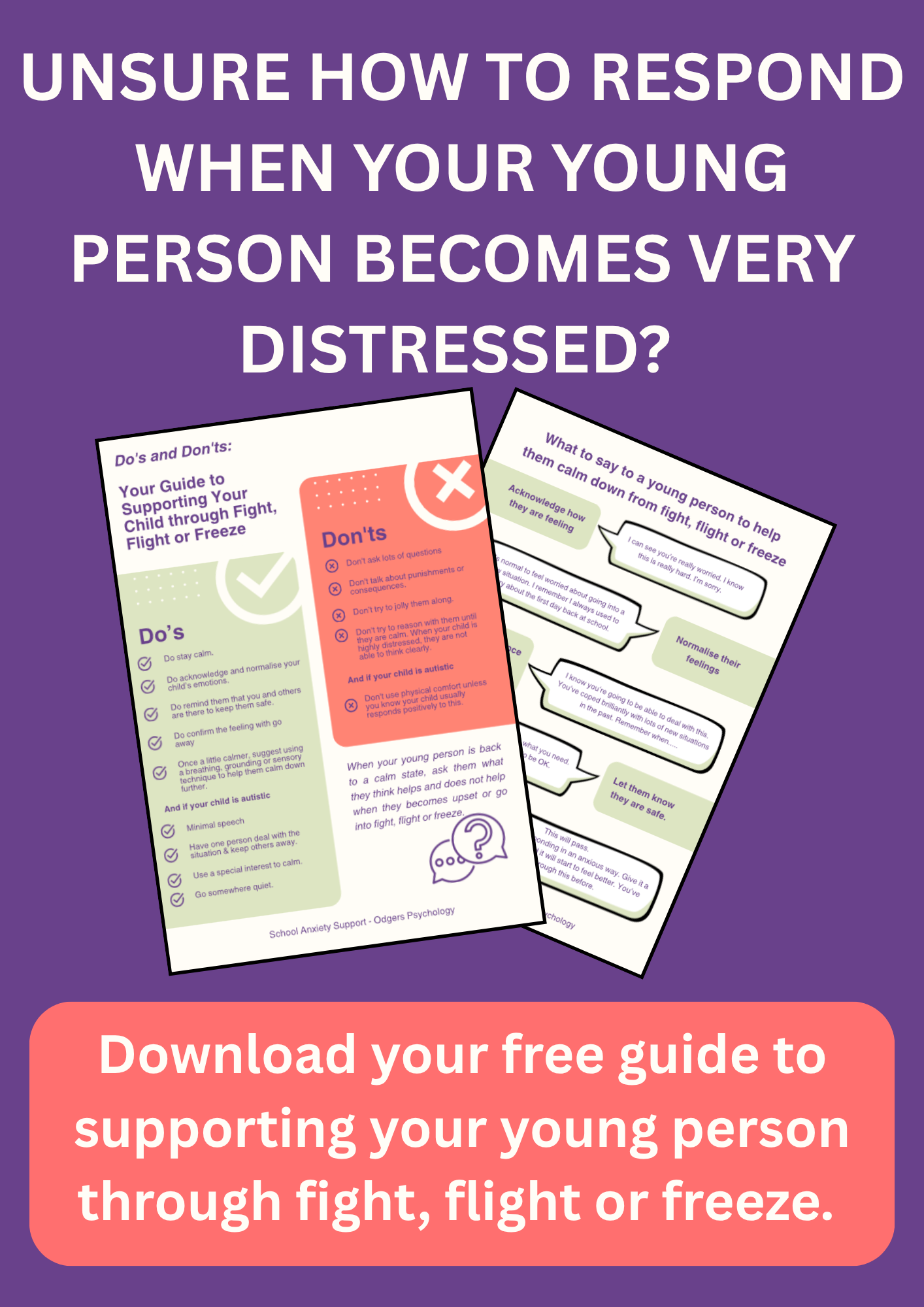How to support your child when their anxiety has sent them spiralling into fight-flight mode
Sep 06, 2023
Anxiety can turn the most sweet-natured, compliant child into a ferocious whirlwind of emotion, sometimes accompanied by very challenging behaviours. But it’s not their fault! It’s the way biology has programmed us humans to work. How can we help our children to feel calmer and safer when their anxiety has sent them spiralling into fight-flight mode?
To get to grips with this question, it’s helpful to understand a little bit about the purpose and biology of anxiety. Everyone experiences anxiety and often anxiety is a healthy and helpful response. Anxiety is our body’s early warning sign that we might not be safe and helps prepare us to survive. When we think something bad is going to happen, our bodies release hormones to help us deal with the threat. This hormone surge produces the physical symptoms of anxiety that feel so awful - the sick feeling in our stomachs, our racing heartbeat, that dizzy or lightheaded sensation. Because our body’s blueprint was designed hundreds of thousands of years ago when the main threat was physical predators, these hormones prepare us to deal with this threat by making us ready to run away from the predator, fight the predator or freeze so the predator does not see us. This is the fight-flight-freeze response.
The part of our brain that is involved in co-ordinating much of this physical response (our pre-frontal cortex) is the same part of our brain that we use to things through carefully and take complex decisions. In the face of competing demands and the limited capacity of our pre-frontal cortex, the fight-flight-freeze response wins and our ability to think things through takes a hit. People in the throes of flight-flight-freeze literally lose the ability to process cognitive information well and to focus on information other than the thing they are worried about. This is why it will be almost impossible to have any kind of sensible discussion with your child when they are in a heightened state of fear.
So what can you say when your child is highly distressed that will help them feel safer and support them to calm down? Here is a suggested approach.
- Empathise and label the feeling. As with all children who are feeling highly emotional, it’s helpful to start with trying to connect. You need to explicitly show them than you understand how they feel by labelling their emotion. So you can try saying things like: “I can see you’re really worried”. “You look absolutely terrified”. “This is really, really scary for you”. If you’re not sure how they are feeing, you could say “I’m wondering if you’re feeling anxious / nervous because you’ve suddenly gone quiet / your face has turned red / you just shouted at your sister”
- Explain and normalise what is happening to them. The physical sensations your child experiences when they are highly anxious can be very alarming to them if don’t know what is happening. It’s helpful to normalise the physical changes that are happening in their bodies. You could try saying something like, “I can see your hands are shaking and you're breathing really hard. That’s how everyone’s body responds when they are worried. It feels horrible but it’s not dangerous. It will stop in a bit”.
- Validate their feelings. It’s helpful to show your child that you think their feeling are valid. You can do this by normalising what they are worrying about. For example, you could say “Lots of people feel worried about starting a new school / going into year 6 / going on the bus by themselves for the first time.”
- Offer support. Lastly, you can show them that they are not in this by themselves. You are their cheerleader and someone they can rely on. You could say something like, “I’m here to help. Let me know when you’re ready and you’d like me to help you”. If they indicate they would like some support, you could ask if they want to try some ideas to help them feel calmer. These would normally be strategies you have talked to them about and practiced when they are calm. (I’ll be discussing the sorts of calming strategies you can encourage your child to try in an upcoming article.)
You may need to repeat this loop multiple times before your child is able to regulate themselves. Some young people may calm down very quickly, but for others, it can take much longer. Sharing your adult calm with a highly anxious child using the approach described above can be very powerful, but as with all strategies, not every suggestion will work with every child.
Come Along to My Next Masterclass!
Six Simple Steps to Help Your Child Through Fight, Flight or Freeze - A One Hour Masterclass for Parents of Children Aged 6 to 16 with School Anxiety.
Feel calm, confident and connected when your child panics before school or has an after-school meltdown.
Date: 2nd December 2025.
Time: 8pm to 9pm.


